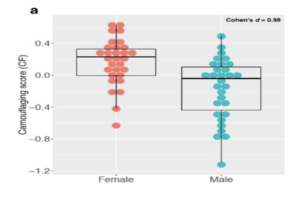
Figure: High Density Housing (Source: Geograph Britain and Ireland, Author: ad acta)
Housing for the poor and efforts to mitigate climate change are important sociological and humanitarian concerns that, normatively speaking, ought to be addressed immediately. Unfortunately, California’s efforts in this direction have suffered a setback (Dougherty, 2020). To combat the housing crisis, two years ago California State Senator Scott Weiner pushed for a bill to overturn zoning laws that prevent high-density housing near transit routes and areas with other amenities. High-density houses near transit lines would not only be able to house the poor at an affordable cost, but also cut the carbon emissions associated with long-distance driving (Dougherty, 2020). However, two main groups opposed this push: rich suburbanites, whose lifestyle would no longer be private or opulent enough with the presence of high-density houses, and the less well-off city dwellers, who feared gentrification (the change in the nature of the neighborhood because of wealthier people moving in and bringing newer housing or businesses with them) which may displace them (Dougherty, 2020). The bill did not pass in the State Senate (Dougherty, 2020).
In opposing the bill, wealthy suburbanites and inner-city dwellers both seem to have hurt their own self-interest: the zoning laws have created a shortage of affordable housing, which in turn has created a shortage of firefighters and teachers (who cannot afford the current housing prices to stay close enough to commute to their job) whose services both groups need. One might think that the only way to make decisions that maximize the best interest of everyone involved is to give decision-making power to the ‘right thinking’ people, the so-called ‘philosopher-kings’. But of course, that cannot be done in a democracy. What is to be done, then?
A theory advanced by Professor Robert Ellickson of the Yale Law School may give an answer. The problem is not that decisions are being made by the wrong-thinking people; his theory suggests that the decisions are not being made at the right level. He argues that efficient property regimes–the distribution of decision rights about property, including zoning laws–are the ones that minimize deadweight and transaction costs (Ellickson, 1992). For example, consider a society owning a farmland as a group. If one member grows a plant that poisons the soil, it could make the whole farmland unfit for any more cultivation. This is a deadweight loss for the society. The society might then decide to police the farmland to ensure that such things don’t happen, and it incurs a policing cost. This cost is the transactional cost.
In his article Property in Land, Ellickson draws attention to different types of events that can happen on the land to determine what decision-making regimes for the land would be appropriate (Ellickson, 1992). First, consider a small event, like tomato cultivation, that affects only a small piece of land (Ellickson, 1992). The costs and benefits associated with cultivating tomatoes are tied to the small area that it is grown on. Individual property ownership, which gives decision rights to the individual owner, is most efficient in this type of event (Ellickson, 1992). Through individual ownership of land, deadweight losses are reduced because the costs of growing tomatoes will be borne by the person growing them, who also enjoys all its benefits. The person has every incentive to minimize his own costs, and therefore will ensure that the small event creates the most benefit and least harm to himself. Transaction costs are also minimized, because the person owning the land does not have to negotiate with anyone else to determine the exact location or breed or quantity of tomatoes he will grow. A group ownership regime where the whole community decides what to grow, and enjoys the benefits, would not work effectively. The whole community would need to debate the type or quantity of tomatoes to be grown on the piece of land. And nobody would be willing to put in the effort required to plant tomatoes, water the plants, remove weeds, and keep insects away, because they would be putting in all the effort and yet get only a small share of the benefits. This lack of effort and the lost opportunity to cultivate tomatoes is a large deadweight cost. Therefore, individual ownership is better than group ownership for this event.
Second, a medium event affects a group of individual units of property–for example, building a dam to create a pond in a stream (Ellickson, 1992). The costs are tied to the small group of units that the dam is built on, and the benefits are mostly enjoyed by those units. Again, according to Ellickson, an individual ownership regime is the most efficient one, for it minimizes the transaction costs. Since building the dam affects only the few units of divided property, the number of people that have to negotiate with each other is greatly reduced (Ellickson, 1992). In addition, these repeated negotiations increase the cooperation between neighboring units of land and lead to informed decisions because the negotiators are the ones who are most knowledgeable about the matter at hand (Ellickson, 1992).
Lastly, large events affect an area that is far wider than what is governed, for example, a fire whose fumes affect all the people living on the piece of land (Ellickson, 1992). The costs associated with such an event are borne by a large number of dispersed people. In this case, Ellickson states that individual ownership is not the most efficient option to govern the property because it results in very high transaction costs (Ellickson, 1992). Each person has to negotiate with all the others who bear the cost, and people are far too dispersed to do so effectively. Thus, according to Ellickson, group decision-making by the government through laws is the most effective way to control large events (Ellickson, 1992).
Applying Ellickson’s theory to the zoning issue in California, let us consider a city to be the decision-making entity. That is, let us scale up Ellickson’s model so that ‘individual ownership’ refers to a city governing itself, a group is a small group of neighboring cities, and a large group is the state of California. Building a neighborhood park is an example of a small event in this scaled-up model. This is because the cost of building the park is borne by the city, and it is unlikely that people from a neighboring city travel all the way over from other cities or regions of the state to this city just to visit a park – that is, the benefits of the park are enjoyed mostly by residents of a single city. Indeed, decisions to create city-specific infrastructure are made by the city itself, and this is efficient.
Creating housing for the poor is a medium event in this scaled-up model. Although the costs associated with affordable housing, e.g., traffic congestion due to high population density, have to be borne mostly by the city that houses them, the benefits of housing the poor extend to the nearby cities where these people work. Those neighboring cities benefit from being able to hire service providers, such as teachers or firefighters, who previously could not afford to live close to the city (Dougherty, 2020). Ellickson’s theory therefore suggests that housing for the poor, being a medium event, is most efficiently tackled by a group of cities negotiating with each other. It is not surprising, then, that the attempt to make the zoning laws at the California state level did not lead to an optimal outcome.
Climate change, in contrast, is not even a large event – it is a super-large event, because it imposes costs on the entire world. It is obvious that getting every city in the US (and even the world) to negotiate and cooperate with each other is a Herculean task, which is to say that it imposes prohibitively high transaction costs. Therefore, getting the next level of decision making, that is the state (and even perhaps the country), to make laws about climate change is sensible.
Because housing for the poor is a medium event and climate change is a super-large event, we can understand how Ellickson’s theory suggests that cities should cooperate with one another to house the poor, and the state or federal government should create laws that address the issue of climate change. In California, it seems reasonable to set up an inter-city forum to decide who will house the poor and how. In this way, the wealthier suburbanites who value their privacy will be willing to pay other cities in return to house the poor, and the communities that fear gentrification the least will be the ones accepting such a deal, easing the two main oppositions to overriding the local zoning laws (Dougherty, 2020). This payment could be in the form of a transfer from the employing city to the housing city for each of their employees living in another city’s high-density housing.
While an inter-city forum may add enough high-density houses to house the poor, it may not add enough high-density houses to reduce automobile usage for combatting climate change. Indeed, they would be unwilling to pay the price for solving a problem whose full cost is not borne by them (it is borne by the entire world, of which this group of cities is a small part). To achieve this, the state could perhaps make laws to mandate a certain percentage of mass transit lines to be populated and leave the individual cities to work out the details.
Of course, Ellickson’s solution, though simple enough to be implemented, may not always work in practice. If it is so efficient to house the poor using inter-city cooperation, why hasn’t it been done yet? After all, inter-city cooperation is not so difficult – there are many examples of cities that share water, transport lines, and education facilities. Perhaps Ellickson’s theory fails in practice because it assumes that the decision-making units that constitute the group ownership are a close-knit group. Power is supposed to be dispersed in close-knit groups, which essentially means there is broad parity (Ellickson, 1992). Is a conglomerate of cities a close-knit group? Maybe not. Cities are segregated, so there is often an inherent class-based hierarchy between different cities. Some cities are inherently rich and might wield more power in inter-city negotiations than poorer cities. If the underlying assumption of Ellickson’s theory does not hold, it may be hard to apply it in practice. Yet, helping to create structures for inter-city cooperation might be a better solution than is state-level zoning.
To summarize, Ellickson’s framework suggests that decision-making, if dispersed at the right levels, can lead to reasonable decisions that promote everyone’s self-interest well. In the case of California’s housing problem, a combination of inter-city negotiation and state or federal legislation can arrive at a proper solution for all. This may not always work, because assumptions that the theory takes for granted does not always hold. Nonetheless, the application of his theory is insightful and has the potential to reasonably solve many problems.
References
Dougherty, C. (2020, January 30). California, Mired in a Housing Crisis, Rejects an Effort to Ease It. The New York Times. https://www.nytimes.com/2020/01/30/business/economy/sb50-california-housing.html
Ellickson, R. C. (1992). Property in Land. Yale Law Journal, 102, 1315.
Related Posts
Autism Spectrum Disorder and Gender: The Case for Expanding the Autistic Phenotype
This article was originally submitted to the Modern MD competition...
Read MoreCOVID-19 and its Implications for Adolescent Mental Health
Covid 19 and Isolation (Source: created by author) Abstract The...
Read MoreThe H.U.N.G.E.R. Initiative (Helping Underserved Neighborhoods Generate Equitable Resources)
This publication is in proud partnership with Project UNITY’s Catalyst Academy 2023...
Read MoreInvestigating the Quality of Healthcare in Rural Areas
Cover Image: A rural Metro ambulance in Memphis, Tennessee. Rural...
Read MoreAlleviating Vaccine Hesitancy: The Path to a Safer Future
The human mind is constantly working on the fly, adapting...
Read MoreNeuroscience, Narrative, and Never-Ending Stories
Figure 1: A field of poppies. The myths of Persephone...
Read MoreAnusha Kallapur






